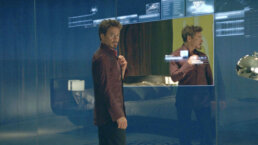He who wonders discovers that this is in itself a wonder.
—M.C. Escher
Your ancestors called it Magic,
but you call it Science.
I come from a land where they are one and the same.
—Thor
I. DESIGN THINKING
The concept of “Design” as a system of “thinking” is often credited to Herbert Simon, the brilliant professor at my alma mater—Carnegie Mellon University. In his 1969 book, The Sciences of the Artificial he proposes “a science of design, a body of intellectually tough, analytic, partly formalizable-partly empirical, teachable doctrine about the design process.” The term “Design Thinking” has become one of the biggest buzzwords in the modern day business lexicon. Every organization seems to have their own version of it— complete with colorful diagrams (usually hexagons) and corresponding info-graphics. From IDEO and the d. school to the Design Council to Google to IBM—all utilize a version of a 5-step process built around understanding people’s needs and creatively discovering the best solution to meet those needs. It’s a way of broadening your perspective to find new and innovative ways of solving problems. By putting yourself in the customer’s shoes, problems can be viewed from the inside out in order to find the right questions to answer. It encourages one to adopt a designer’s mindset to explore creative solutions that did not exist before.
I knew the term had reached it’s maximum saturation point when visiting my son’s first grade classroom 2 years ago and seeing the design thinking process hanging on the walls of his classroom. The version for 6 year old went something like this: ask-imagine-plan-create-improve. Like all design thinking doctrines, the grade school version also prescribed to ask the right questions, continuously problem solve and evaluate whether a solution is good or not.
Much of this practice is intuitive to a designer—we were born and bred with this process of creative problem solving. As is often the criticism, perhaps “design thinking” is an oversimplified way of describing the creative process, and relies too heavily on post-it notes (see the Natasha Jen speech Design Thinking is BS). But codifying these processes is meant to expand this way of thinking far beyond the studio walls of designers into organizations of all shapes and sizes. It’s a way to “share the wealth” of what comes naturally to us designers with those that could (perhaps) use it the most. I certainly respect and appreciate this becoming part of the zeitgeist of 21st century business. But alas, this is not an essay on Design Thinking; what is most fascinating to me is the next level—that of Science Fiction Thinking. To borrow a term from Howard Marks in his exceptional book The Most Important Thing, there is something called ‘Second Level Thinking.’ “You must think of something they haven’t thought of, see things they miss or bring insight they don’t possess.”
Whereas Design Thinking is searching for alternative solutions, Science Fiction Thinking is searching for alternative futures, altogether…
Perception is no stranger to creating impressively large projects for mega-studios. With the Wakandan tech featured in “Black Panther” and many Marvel Studios’ superhero projects under their belt, the studio’s talented design team recently unlocked a new level of achievement by partnering with Pixar Animation Studios to create the main-on-end titles for “Lightyear,” which follows the legendary ranger Buzz on an intergalactic adventure. Spotlighting the iconic space ranger suit, Perception designed the closing sequence for Pixar’s 2022 release, drawing from unlikely sources of inspiration and being grounded by a deep affinity for the character. The studio delivered multiple versions of the titles, each securely rendered on the Conductor cloud platform in 4K resolution, including stereo versions.
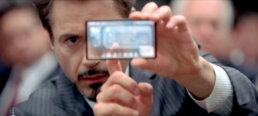
SCIENCE FICTION THINKING
For the last few years, at Perception we have been pioneering a new paradigm, SCIENCE FICTION THINKING. Fiction—specifically Science Fiction–is a way of perceiving the world through the lens of what is possible instead of what currently exists. It’s a way of mining our wildest imaginings of the future to analyze our present reality. It is critical that designers working in the real world devote time studying and pondering the imaginary. Nicholas Negroponte (visionary founder of the MIT Media Lab) famously states that if your industry could build an idea you’re working on, then you’re not being ambitious enough and should stop. Science Fiction Thinking can light the path to follow this advice and can significantly effect the way companies create and innovate. Similar to Design Thinking, Science Fiction Thinking takes a human-centric approach to creation. By placing the human/user first and tech second, it allows designers to recognize the effectiveness of the product and uncover all its potential issues. Through deep examination of current sociological and economic trends, and imagining what the future could bring, companies can extrapolate far-reaching potential uses of their products and create a roadmap to build toward. The customer-centric focus on the ‘how’ and ‘why’ people use technology in this perceived future provides the catalyst for creating the imagined object.
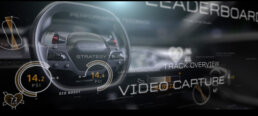
To pick up a thread in my blog Parallel Worlds:
For generations, science fiction has presaged science fact. The greatest writers’ imaginations crafted visions of the future throughout literature, that came to light decades later. From Jules Verne’s 20,000 Leagues Under the Sea in 1870 inspiring electric submarines in the 1960s, to HG Wells 1898 classic War of the Worlds’ influence on the inventor of the rocket ship in the 1920s, all the way to Star Trek’s late 60’s communicator device reincarnated in Motorola’s first cell phone—this influence is quite apparent and well documented.
Today, however, literature has taken a backseat to the visions of filmmakers, screenwriters and visual effects artists imagining future technologies on the big screen that will likely influence our future reality. In a way, movies function as the perfect prototype testing ground—allowing fully conceived characters (personas) to interact with gadgets and devices in very specific scripted scenarios (use cases). The more realistically designed and believable these technologies appear, the more likely we will see them in the real world.
The films and stories didn’t necessarily create the technologies they presaged, however the young inventors and burgeoning scientists took conceptual inspiration from seeing these innovations ‘come to life’ on screen. More importantly, films show how they can be integrated and used within an imagined world and found a way to transport part of that future vision to the present. Star Trek’s communicator device inspired flip phones not because they were the main focus of the show but rather that they demonstrated the utility and purpose in the daily lives of the characters. We could all see how such a technology could function and enable these characters in a variety of situations.
It seems like every day I’m reading that more and more tech companies are employing futurists who use Sci-Fi as a medium for exploring new technologies and their potential consequences. Companies as diverse as Volkswagen, Hersheys, and Capital One Bank are bringing these specialists on staff to help envision their futures in a rapidly changing world. Even huge tech companies like SAP and Magna are now building entire organizational initiatives around ‘science fiction’ and next gen innovation.
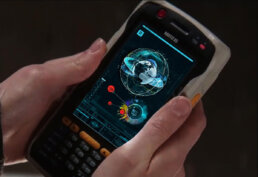
This unique and focused niche between science fiction and science fact that Perception has been leading for years, is being mentioned more often than any time in the past. Some call it Sci Fi Prototyping—we often call it Experience Prototypes. This is the creation and design of futuristic, forward looking experiences that look and feel as real and authentic as possible. Many researchers are acknowledging science fiction books and films great influence on new forms of human computer interactions. As I mentioned earlier, Science Fiction prototyping is not a new concept—for generations writers have been creating fiction based on or inspiring fact. What makes Science Fiction Thinking unique is that it can and should be explicitly part of the development process—whether you’re a designer, engineer, scientist, artist, or technologist. These outlets can also raise important issues and challenges of our time brought upon by these potential technological advances and can also provide solutions for overcoming or avoiding these issues altogether.

The science fiction author Bruce Sterling refers to these as “Design Fictions—an approach to design that speculates about new ideas through prototyping and storytelling.” He explains: “It’s the deliberate use of diegetic prototypes to suspend disbelief about change…the important word is diegetic. It means you’re thinking very seriously about potential objects and services and trying to get people to concentrate on those rather than entire worlds or political trends or geopolitical strategies. It’s not a kind of fiction. It’s a kind of design. It tells worlds rather than stories.”
There’s also a parallel concept known as “Strategic Foresight,” the study of the future. It is the focused consideration of possible or alternative futures, and can be applied to an imagined technology or theoretical product. Combining Strategic Foresight and Sci Fi Thinking enables the designer to generate exponentially iterative design processes to imagine and create new technological possibilities. It’s a playground of the imagination where new ideas and potential nightmares can have a tug of war, all on the safety of the page or screen. These prototypes are incredibly valuable conversation-starters about technology and the future. As we know the future is not set, science and technology are constantly evolving and changing our future path. By creating these prototypes, we can explore the various futures we want to either avoid or move toward. All of these outcomes can be carefully considered before your creation goes out into the world—once the genie is out of the bottle, it can’t be stuffed back in. New features and attributes can be tested and studied far cheaper drawing on a napkin (or a storyboard, motion prototype, cinematic visualization etc) then once the product is “live.” Alterations can easily be made before a technology becomes real to lessen any negative impacts and amplify the positive ones. If most of the design challenges can be hashed out in this stage, then your product will have a higher probability of success. By expanding our thinking through these explorations of multiple worlds and futures, we can build better technology and ultimately speed up software and hardware development. Brian David Johnson writes: “Creating SF[sci-fi] prototypes, writing stories, making movies and drawing comics about the future are one of those things that people can do to actually change the future. Think about the power of science fiction to capture people’s imaginations and change the way we think.”
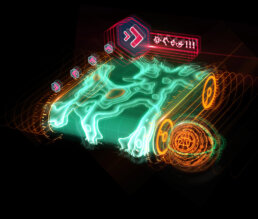
Alfred Hitchcock storyboarded all his films in meticulous and painstaking detail. Indeed, he spent most of his time in this phase, experimenting with every possible combination of camera angle and shot composition—every style of cut or transition to be sure he arrived at the very best cinematic storytelling solution. Actors complained that once on set, Hitchcock was really there only to capture the full motion version of his storyboard and he moved the talent swiftly through shooting. Already visualized and crystallized in his mind’s eye, he just had to roll the film to acquire the images and assemble them to match his pencil and paper ‘prototype.’
MIT’s Media Lab has courses closely aligned to this concept of Science Fiction Thinking. “Science Fiction to Science Fabrication” (https://scifi2scifab.media.mit.edu/syllabus-3/) is a course where students use prototyping and technological research to predict the future and storytelling media to tell stories. From the syllabus:
“For decades, science fiction authors have explored both our wildest dreams and greatest fears for where technology might lead us. Yet, science fiction is fueled by the concerns of today just as much as it is about fantastic imaginings of the future. This class ties science fiction with speculative/critical design as a means to encourage the ethical and thoughtful design of new technologies.”
They strongly encourage students to “sketch in hardware” or prototype in paper and “Build it to see if there is a there there.” Writing stories of science fiction is a far easier form of prototyping new ideas and a more forgiving medium then soldering irons or hot glue guns used in caffeine frenzied all nighters. See my interview with MIT professor, Dan Novy here.
Science fiction like Star Trek is not only good fun but it also serves a serious purpose, that of expanding the human imagination. We may not yet be able to boldly go where no man (or woman) has gone before, but at least we can do it in the mind. We can explore how the human spirit might respond to future developments in science and we can speculate on what those developments might be.
There is a two-way trade between science fiction and science. Science Fiction suggests ideas that scientists incorporate into their theories, but sometimes science turns up notions that are stranger then science fiction.
—STEPHEN HAWKING
STORYTELLING
I’ve written about storytelling at length (again, see Parallel Worlds). “Stories persuade, stories engage. Stories teach and they guide. Stories connect human beings on the deepest emotional levels.” Human beings need to tell, collect and understand stories. Fiction and Science Fiction Storytelling allow you to “live” more lives in the space-time of a single lifetime than you would normally be able to. It’s a profound vehicle to test out theories and outcomes without any true exposure to dangers or time constraints that you would normally succumb to if you had to live out every experience by yourself. Sci Fi prototyping allow you to “see” these consequences while simultaneously opening up multiple pathways for safer, more effective outcomes when you get there. Frederik Pohl famously said: “A good science fiction story should be able to predict not the automobile, but the traffic jam.” The idea of course, is to design it so that the traffic jam doesn’t happen.
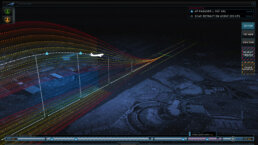
Ursula K LeGuin has written that science fiction looks at current technological trends and extrapolates imaginatively to a near or far future. Stepping through the true implications and outcomes of a technology in the pages of a science fiction book is like an ethics class for inventors. Indeed engineers and designers should be trying to think like science fiction creators—the mindset—when they approach their own work. Julian Bleecker explains in “Design Fiction: A short essay on design, science, fact and fiction” that using sci fi and futuristic visualizations can be an incredibly effective way to develop new technologies. The intersection of science fact and fiction is the sweet spot for the inspiration and creation of prototypes, conceptual innovations and real technology. It “creates these conversation pieces, with the conversations being stories about the kinds of experiences and social rituals that might surround the designed object.”
”Any sufficiently advanced technology is
indistinguishable from magic.“—Clarke’s Third Law
II. MAGIC, SCIENCE FICTION AND TECHNOLOGY
One of my greatest passions and hobbies has been the art and technique of magic. From studying the earliest stage illusionists to 20th century sleight-of-hand pioneers and technicians, I have loved magic since I was a little kid. It’s one of the inspirations behind the name of my company, Perception. The studio walls are even adorned with classic magic posters of Houdini, Kellar and Thurston.
When the team at Perception was designing and conceptualizing new technologies for the mythical world of Wakanda (Black Panther), a very important part of the ongoing dialogue with our visionary Marvel Studios collaborators was ensuring that our futuristic tech ideas always retained a high degree of plausibility and believability. If we went too far—to the realm of the unexplainable and completely miraculous—then this could only be achieved by MAGICAL means, an instant deal-breaker. Does this happen by technology, or magic? That remained the ongoing question we tested each and every idea throughout the design and conceptual phase. But as Clarke’s famous quote above eludes, “Magic” is still the word we use to encompass the wonders of a new technology before it becomes ubiquitous.
Returning to the MIT Media Lab, they actually have a class that uses principles of magic to inspire technology innovation. Entitled “Indistinguishable from…Magic as Interface, Technology and Tradition” the syllabus states: “Engineering illusions requires close attention to the limits of human Perception, disciplined practice of the art of showmanship, and subtle use of the crafts of deception—skills that are just as relevant to contemporary technology demos as they were to 19th century stage illusions.” Like a new technology, magic creates something out of nothing—there is a “thing” there now that did not exist before. Alan Moore (science fiction writer, Watchmen) explains:” Magic is real only in the sense that the human mind can conceive of something that did not exist before and then make it.”
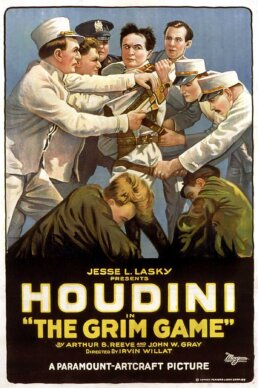
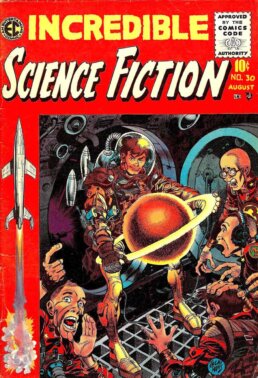
Science Fiction Thinking echoes the creation of magic in the sense that it suggests solutions to problems or technologies to delight, entertain and educate. When these are brought out into reality in the form of functional prototypes, this creation process is complete. Good magic, like all art, is a celebration. It celebrates mystery and wonder and the irrefutable fact that we do not know all the answers and that often it is sufficient to simply know the questions.
Charles Reynolds (the brilliant illusionist, creator and thought leader) wrote that every magic effect can be thought of as a combination of two types of stories: the first is the tale of wonder, the second is the mystery tale that needs solving. Magic fulfills a basic human need for marvels—a deep seated desire to believe in the miraculous and a world in which anything is possible. These are the exact same tenets embedded in Science Fiction Thinking. Indeed, one of the greatest appeals of magic relates to the subconscious desire to control the natural world around us. A magician at the top of his game should increase our respect for the mysteries of life, to reinvigorate the sense of mystery and wonder that sadly dissipates at an early age. “The true magical experience should be more about wonder than wondering,” Reynolds writes.
Many magicians have said that scientists and other highly intelligent audiences gain so much delight in magic because they so enjoy the rare opportunity to visit an imaginary universe where physical laws they are so fluent with no longer apply; where the clearly impossible becomes seemingly possible. “It’s an experiential vacation of a sort. These are people who have the assurance to know that they could easily determine the fundamental secrets of magic if they were inclined to take a trip to the library. The secrets such as they are, are so trivial and accessible that it’s not even necessary to know them. To know they exist is enough.” (Jamy Ian Swiss, Shattering Illusions)
In the performance of good magic the mind is led on, step by step, to ingeniously defeat its own logic.
– The “Professor” Dai Vernon
The source of the spectator’s experience, magical or otherwise, is his PERCEPTIONS. Everything he undergoes is perceived, in some manner, through his senses. The sum total of his conscious life comes to him through the five senses, but more particularly through the senses of seeing and hearing. But the mind, not the eye, sees. The mind, not the ear, hears. The mind, not the fingers, feels. So it is with all of the senses.
– Dariel Fitzkee
Showmanship for Magicians, 1943
III. TOWARD A NEW PARADIGM: THE PERCEPTION SCIENCE FICTION THINKING PROCESS
Changing modes takes the Hummer EV to wildly different environments.
As I have been discussing, Science Fiction Thinking is an invaluable tool to begin any kind of digital transformation project. It is not intended to replace Design Thinking, rather it amplifies it and provides a framework and clear path forward. Ideas can be taken from design thinking workshops and then placed into a science fiction setting to see how far the idea can be taken in this new, futuristic universe. It allows companies to examine how innovations might be legitimately used, and through this process, measure their potential value. In contrast to fantasy, the nature of Science Fiction is found in its authentic, highly possible subject matter built on sound logic and scientific principles. This forces a deeper level of thought and examination—resulting in a more thorough process. Most importantly, Science Fiction Thinking strives to illuminate the human condition. It does this by demonstrating how a technology might be interacted with, what role the tech would play amongst other objects ‘of the day,’ expose their drawbacks and raise important questions around these potential narratives.

If traditional Design Thinking is about ‘thinking like a designer,’ Sci Fi thinking is about adopting the mindset of a Science Fiction creator and a designer. The entire team has to be looking through the lens of sci-fi before beginning the process. Once the mindset is locked in, you can begin the process.
Below is Perception’s Science Fiction Thinking Process, outlined in 4 stages.
1- PERCEIVE + DEFINE
At the very beginning, we want to listen very closely to understand the exact “story” we are looking to tell. We’re aiming to define all the users (characters), motivations, needs, desires, emotions, use cases (plot points and storylines). From here, we need to define the problem by asking the right questions. It’s been said that if you want better answers, ask better questions. You can’t find a solution if there is no clear problem. By asking the right questions, we continually dive deeper and deeper into each of these aspects until we can fully understand the narrative we’re looking to tell. In this way, the entire team fully immerses themselves into this imaginary world. We have to buy into it and find the way in.
We cannot proceed to Step 2 until and unless the problem has been fully ‘perceived’ and thoroughly defined. In some instances, a prospective initiative won’t proceed to step 2 if there is no real problem defined. This is an all too common occurrence with some technology innovations---creating a solution for a problem that doesn’t actually exist. When done extremely well (ie. Apple), an entirely new category and product can be created, along with a new need people didn’t even know they had. Steve Jobs was a genius in creating these desires in users. When done poorly, an esoteric new piece of technology lies dormant waiting for someone to come along and find a practical use for it.
2- IMAGINE + ENVISION
This is where we get to let loose and begin to unleash our imaginations. What’s the story of your future? It’s important to free yourself from the shackles of your current reality—such as technological capability, current resource limitations or funding. This is a thought experiment of envisioning future societies and all the details that go into designing the “movie set” in your mind. Imagining it will be the first step in making it a reality.
This phase involves both creating (sketching, doodling, drawing, writing), and searching for inspirational imagery. Since this step is hinged on the sense of sight, there’s a complete emphasis on visuals here. Whether it’s original creations, images ripped out of books, pulled from websites, or sketches on napkins—the entire team needs to collectively envision these rudimentary conceptual ideas and ‘regions of interest.’ There could be multitudes of specific visual solutions to the problem, or a wide net auditing reference imagery from a vast universe of adjacent possibilities. If the team can’t ‘see’ it, the idea can’t move forward.
As Bruce Sterling discussed, science fiction describes ‘worlds.’ Where others use the term brainstorming, or ideating, we think of it as “worldbuilding.” This is precisely where the magic comes in; dreaming of wondrous, miraculous possibilities—a sci fi world where the impossible becomes possible.
This is divergent thinking at its finest—there’s no rules, no censoring. A great science fiction creator will always be looking for that sweet spot that goes just beyond the current limits of our technological climate, but not too far where everyone will just get lost. Kenneth Johnson, the brilliant science fiction author and creator of classic sci fi television (The Six Million Dollar Man, Bionic Woman, Incredible Hulk, V and Alien Nation) has a deep affinity for what his audience’s will ‘buy.’ In my interview with him, he spoke candidly of moments where others (notably Stan Lee) argued passionately to push stories over the edge. Johnson skillfully navigates that fine tightrope of what audiences will follow and believe. He discussed with me George Burns’ advice to him — “the best way to sell a lie is to make sure you put as much truth in it as possible.” Go as far as you can but always retain some connection to current reality and scientific principles—however extended that connection is, it needs to be there.
3- BUILD + CREATE
Now that an idea can be visualized and imagined, it’s time to give it form, so it can be felt and experienced. From the initial imagery created, it’s time to create what we refer to as experience prototypes. Here we fill out the world’s details, perhaps adding some characters to interact through scenarios and specific use cases. We create these prototypes to be as realistic and visceral as possible; we’re always looking to uncover the inner soul of the product and user experience. These prototypes are incredibly valuable conversation-starters about the specific technology and the future it will live in. By creating these roughed out experiences, we can explore the various futures we want to either avoid or move toward.
Throughout this entire phase, it’s important to keep asking questions. What is needed to enable this new world? Can any of these adjacent needs be fulfilled from your line of business? What would be the most astonishing manifestation of your product or service if money was no object? Keep asking the right questions, solving the puzzles and work backwards from the solution to arrive at what’s possible. One of our clients in the automotive industry is fond of saying that he “reverse engineers” science fiction. That is exactly the right mentality—begin with the end in mind and work backwards to discover the ‘how.’
4- INSPIRE + BELIEVE
It’s so real you can smell it—you can taste it.
This stage is all about creating a powerful belief through the authenticity of experiencing the final prototype.. The ultimate goal of the entire Science Fiction Thinking process is to create an end product that inspires—whether it’s inspiring decision makers to green light an initiative, or to become a rallying cry for a team of engineers to point to as their north star guiding them on their path for the months and years to come. Since it’s impossible to understand the future, so you must build your way forward to create it.
The experiences using these prototypes are also intended to play out certain outcomes and potential futures, inviting important discussions about repercussions and consequences. As with each preceding phase, constant questions are invited. Does the audience/user “buy it”? Would they want it? Is it aspirational? Did we inspire the decision maker(s)? Is it ambitious enough?
Measuring and testing throughout this process can lead to a much higher probability for success. It’s far easier and more cost effective to build these Science Fiction Prototypes then to go through the entire expense and cycle of building the real thing. The amazing part is the end result can be just as informative and instructional.
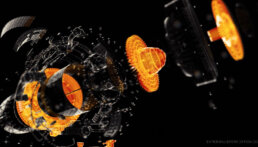
This entire process is a perfect feedback loop. At worst, the results from the process will reveal undesirable futures, or at best, the end result opens up potential areas for improvement, and the process can reset and begin anew.
Inspire, create, repeat.
Jeremy Lasky
An entrepreneur and creative leader, Jeremy Lasky started his career at R/GA right after graduating from Carnegie Mellon University where he studied Graphic Design, Architecture and Business. For 5+ years he lead design efforts for feature films, global ad agencies and broadcast networks. In the Fall of 2001, Lasky co-founded Perception, a cutting edge motion graphics studio that lead the revolution in creating groundbreaking design and visual effects on the desktop. Now in it's 18th year, the studio has sharpened its focus to become global experts in designing futuristic UIs for both feature films and for the most powerful brands in technology. From Iron Man to IBM, from The Avengers to SpaceX, the studio has an extremely unique niche that truly bridges the gap between science fiction and science fact. Lasky leads new business strategies, shapes the company’s growth, while overseeing a full-time staff of 15.
Lasky has been a keynote speaker and presenter at: Promax 2016, Disney Art Summit, Disney Creative Loop Series, Science of Team Science Conference, Biogen Techology Innovation Symposium, TV of Tomorrow Conference, and Razorfish's Global Creative Summit. Lasky has lectured on design and guest speaker at OTIS, SCAD, Carnegie Mellon’s ETC and NYU ITP. He's also given presentations and workshops at some of the biggest tech giants in the world including Samsung, IBM, SpaceX, Intel, Microsoft, GE, Yahoo, Audi, Mercedes, Ford, Chrysler, Visa and Apple.
Lasky’s work has been featured in dozens of design and industry publications and he has garnered many of the most prestigious awards in the design world including AIGA, The Art Director’s Club, Broadcast Design Association/Promax, CLIO, International Andy Awards, Monitor Awards, New Media Invision Awards, One Show Awards, The Charleston International Film Festival Awards, Telly Awards, and The Type Directors Club.


